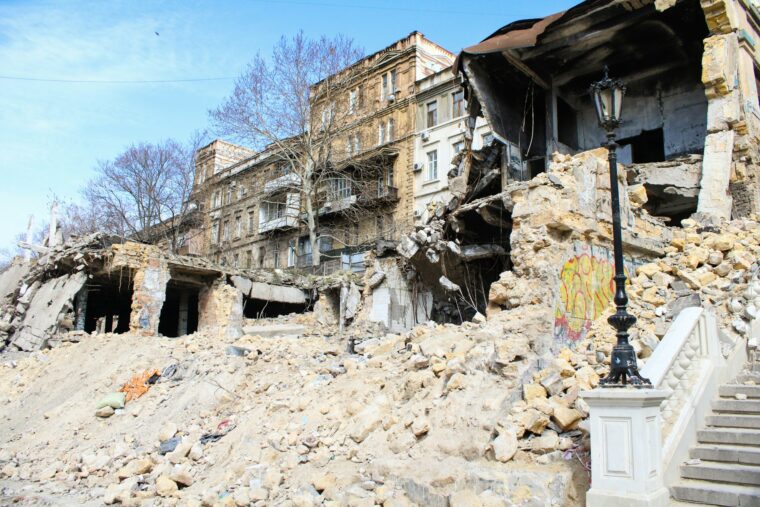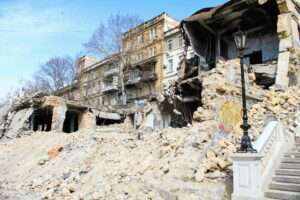
Damage repairs from earthquakes in the U.S. typically cost taxpayers approximately $15 billion a year. Considering that, funding to stabilize or prevent as much damage as possible is a good and prudent effort. According to FEMA and a recent geological survey, the cost of post-earthquake repair can be as much as three times higher than the cost of investing in earthquake-resilient infrastructure upgrades.
Local government officials are regularly encouraged to enforce up-to-date building codes with seismic guidelines. The need to address the vulnerabilities of older construction is critical because these are the structures most vulnerable to earthquakes.
Seismic retrofitting is often used to address the vulnerabilities of all types of structures. This process involves using modern engineering techniques to reinforce and fortify structures so they can withstand the tremors of earthquakes. Reinforcement components include improving foundation stability and strength and adding seismic retrofits. Then, damages are reduced, and citizens’ safety is upgraded significantly. The upcoming projects described in this column are similar to those currently being readied for nationwide launch.
The Guadalupe Dam Seismic Retrofit Project is a $75 million initiative that will be overseen by the Santa Clara Valley Water District. The project will be designed to improve the seismic resilience of the Guadalupe Dam, which is located in San Jose, California. An independent engineering study revealed that in the event of a large earthquake, the dam could face substantial damage, and there is danger of an uncontrollable release of reservoir water. To mitigate that risk, the state Division of Safety and Dams has imposed restrictions until corrective measures can be taken.
The project will include reconstructing and thickening the dam, building new outlets and improving emergency access. The improvements will also increase the dam’s capacity and remove the reservoir’s operating restrictions. Normal water supply will be restored. The project is currently in the design phase, but the permitting process has not started, which may delay construction until 2028.
Photo by Nadiia Ganzhyi on Unsplash
Another seismic retrofit project will involve the Center Street Bridge in Salem, Oregon. This $100 million project is part of a statewide transportation investment program, and the Center Street Bridge was deemed to be a prime candidate for seismic improvements. Situated over the Willamette River, the bridge serves as a vital link between West Salem and downtown for approximately 50,000 motorists daily. The retrofitting measures will ensure continued accessibility and connectivity across the river by reconstructing in-water piers and strengthening columns and foundations.
The project is currently in the design and right-of-way acquisition phase, with construction anticipated to start in 2025. The Oregon Department of Transportation allocated $200,000 for the initial investigations and will be involved in oversight of the large project.
City officials in Pasadena, California, are developing a plan for an earthquake retrofit of its Central Library. With an estimated cost of between $175 million and $195 million, the project will focus on improving the building’s seismic performance and ensuring its stability during a significant earthquake. A critical component will be to guarantee that occupants will be able to exit the building safely in the case of an earthquake. Another component will include preserving the historical exterior of the facility while updating, upgrading and fortifying the structure. According to Pasadena city officials, 60% of the design for the Central Library earthquake retrofit project will be completed this spring. The full design for the project is set to be finished by the summer of 2025, which will immediately prompt bidding and awards for construction.
The Arkansas and Tennessee Departments of Transportation are collaborating on a major replacement project for America’s River Crossing (I-55) bridge, aiming to increase the bridge’s resiliency and earthquake resistance. The project’s cost is estimated at about $1 billion, and the two states will split the cost. The remainder of the necessary funding is currently being applied for through the U.S. Federal Bridge Investment Program. The project will replace an existing 75-year-old bridge and equip the critical connector with features to safeguard against earthquakes and other disasters. The new bridge’s design will upgrade the safety and resiliency and lower the upkeep costs. It will enhance local and regional freight movement, provide improved linkages and rerouting opportunities, increase environmental sustainability and allow for future growth. Construction is scheduled to begin in 2026 and will be ongoing for approximately a decade.
The city of Orem, Utah, has embarked on a significant project to strengthen its aqueduct infrastructure against seismic threats. A $90 million project, led by the Central Utah Water Conservancy District, will be focused on the critical upgrade and realignment of Alpine Aqueduct Reach 1. The project will mitigate the repeated structural damage created by seismic activities. Damage includes hillside erosion, interrupted the water supply to essential treatment plants and unplanned repair costs to other facilities. Components of the project will consist of the installation of an advanced, above-ground pump station and a complete redesign of the pipeline. The redesign will incorporate adaptive features, allowing the pipeline to manage expansion, contraction and fault displacement effectively. With the project design currently 30% complete and construction bids expected by August 2024, the estimated project cost has been estimated at approximately $90 million.
These are large-scale projects, and they will be abundant over the next several years. There will be no scarcity of opportunities related to sustainability, and those related to seismic damage will call for all kinds of industry expertise, equipment and technology.
About the Author:
As President and CEO of Strategic Partnerships, Inc., Mary Scott Nabers has decades of experience working in the public-private sector. A well-recognized expert in the P3 and government contracting fields, she is often asked to share her industry insights with top publications and through professional speaking engagements.

